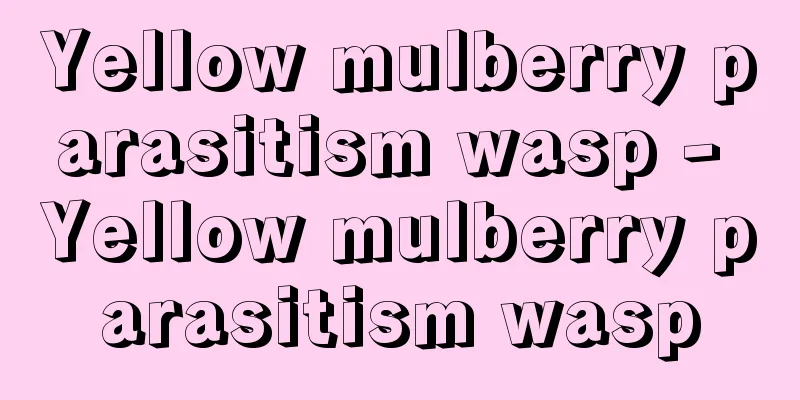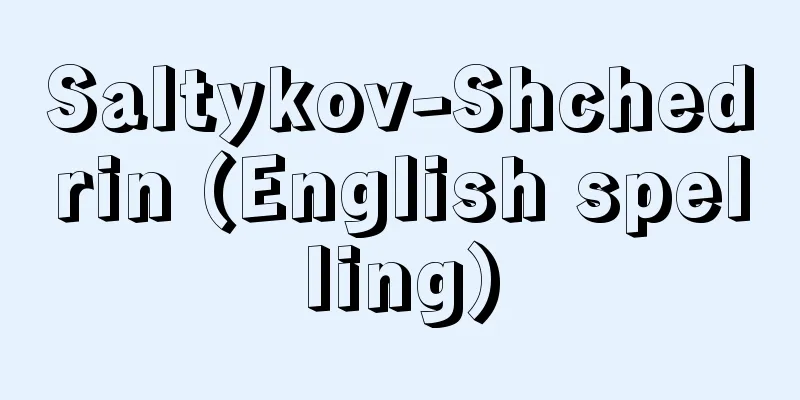Sending insects away - Mushiokuri

|
This is a magical event to banish rice pests, mainly planthoppers and rice stem borers, from the village. It is held regularly every year in early summer, and temporarily when there is a large outbreak of pests. For example, several rice worms are taken, placed in a straw bag, and a procession is formed with a torch at the head, and while beating gongs and drums, the procession goes around the rice paddy ridges to the village (community) border. There, the straw bag is thrown away, burned, or thrown into the river. Logically, banishing the insects from the village is just pushing the burden onto the neighboring village, but outside the village's microcosm is another world, and it was believed that what was no longer visible had vanished. This is a series of events, including those to send off the gods of colds and diseases, and is included in the magical art of pacifying the village. Pests are real, but there is a belief that the spirits of people who died an untimely death become floating spirits and turn into pests. In some places, people carry around a straw doll (a Sanemori doll) dressed as a samurai carrying a sword, in connection with the legend that the spirit of Saito Sanemori, a military commander from the end of the Heian period who is said to have died an untimely death, brings about insect damage. This is why the Mushi Okuri festival is called the "Sanemori Festival." In many places, it was a children's event as one of the early summer scenery. In recent years, with the widespread use of pesticides, insect damage has decreased, and this event has rapidly disappeared. [Shoji Inoguchi] Source: Shogakukan Encyclopedia Nipponica About Encyclopedia Nipponica Information | Legend |
|
ウンカ、ニカメイチュウなど、主として稲の害虫を村外に追放する呪術(じゅじゅつ)的な行事。毎年初夏のころ定期的に行う例と、害虫が大発生したとき臨時に行うものとがある。一例を示すと、稲虫を数匹とって藁苞(わらづと)に入れ、松明(たいまつ)を先頭にして行列を組み、鉦(かね)や太鼓をたたきながら、田の畦道(あぜみち)を回って村(集落の意)境まで送って行く。そこで藁苞を投げ捨てたり、焼き捨てたり、川に流したりする。理屈からいえば、村外に追放しても隣村に押し付けることになるが、村の小宇宙の外は他界(たかい)であり、見えなくなったものは消滅したと考えたのである。風邪(かぜ)の神送り、厄病送りなどと一連の行事で、呪術のなかでは鎮送(ちんそう)呪術に含まれる。害虫は実在のものであるが、非業(ひごう)の死を遂げた人の霊が浮遊霊となり、それが害虫と化したという考えがあって、非業の死を遂げたと伝えられる平安末期の武将斎藤別当実盛(さねもり)の霊が祟(たた)って虫害をもたらすという故事に付会して、帯刀の侍姿の藁人形(実盛人形)を担ぎ歩く所もある。虫送りを「さねもり祭り」などとよぶのはそのためである。初夏の風物の一つとして、子供の行事にしていた所も多い。近年は農薬の普及に伴って虫害も少なくなり、この行事も急速に消滅した。 [井之口章次] 出典 小学館 日本大百科全書(ニッポニカ)日本大百科全書(ニッポニカ)について 情報 | 凡例 |
>>: Insect Selection - Mushi Erabibi
Recommend
Sodium - Natoriumu (English spelling) sodium English
It belongs to Group 1 of the periodic table and i...
crocin
…Dried styles contain pigments and aromatic compo...
Einaudi, G. (English spelling) EinaudiG
...One was Augusto Monti (1881-1966), an anti-fas...
Gap junction
… Ultrastructural analysis of cell-cell adhesion ...
Hiking - Haikingu (English spelling)
It is generally translated as a walking trip. In ...
Float-and-sink analysis
A test conducted to evaluate the possibility of gr...
Madame Noailles - Madame Noailles (English spelling) Anna (Élizabeth, Princess Brancovan, Comtesse Mathieu) de
Born: November 15, 1876 in Paris Died April 30, 19...
Taiyuan
A prefecture-level city in the central part of Sh...
Iga Basin - Igabonchi
(Mie Prefecture) A tourist attraction designated a...
Continued fraction
Of the fractions This form is called a continued ...
Shin
(1) A princely state in the Spring and Autumn Peri...
Jumna
…A tributary of the Ganges River that flows down ...
Liang Tong-shu (English: Liang Tong-shu)
[Born] Yongzheng 1 (1723) [Died] 1815 A calligraph...
Anderson, GM
…It is the origin of American feature films and W...
Red Labor Union - Red Labor Union
When revolutionary political parties and their lea...









